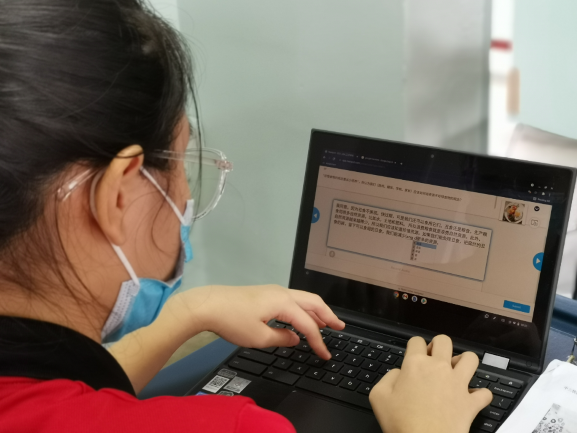Learning Chinese – Teaching Through Online Games
06 Nov 2008
An earlier version of this article was published in Lianhe Zaobao on 8 May 2007.
Using mobile phones and computers, and surfing the Internet are second nature for children today. They grow up playing and communicating with friends and family using all sorts of digital devices.
So it’s no surprise that when these same children enter the classroom, they readily learn through information technology (ICT). Leveraging on this interest, MOE has developed a comprehensive set of Digital Instructional Resources (DIR) to help teachers use IT in Chinese Language teaching. Designed to make learning more interesting for pupils, these wide-ranging interactive multimedia materials cover various aspects of the curriculum and complement the content of existing textbooks and activity books.
Login and learn with your child
With the new DIR, learning doesn’t stop when classes end. Except for certain materials for use exclusively in class, most of the resources can be accessed by pupils for learning on their own at home. MOE has made the DIR accessible via the Internet as many parents are IT-savvy and actively participate in their children’s learning process. The online DIR provides a great opportunity for parents and children to revise Chinese Language lessons together.
The various types of online DIR for Chinese Language learning are outlined below to help parents understand the materials’ various functions and features:
Hanyu Pinyin
Primary 1 students are required to learn hanyu pinyin in their first term. MOE has developed a series of interactive Hanyu Pinyin Syllable Charts to help pupils learn the proper pronunciation. To reinforce class lessons, children can play different hanyu pinyin games with their parents.
Passages
Passages from the Core Module of the new primary school Chinese Language curriculum are presented in lively forms combining text, images and sound. Apart from reading along with and understanding the passages accompanied by lively animations, karaoke-style text and recordings of standard pronunciation, the hanyu pinyin shown on top of each character in the passage also helps pupils make sense of the passages.
Pupils can click on Chinese characters to see the correct sequence of strokes used to write them. These interactive features make it easier for pupils to master the content of the passages and learn to recognise and write new Chinese characters.
Sing-along
It’s much easier to remember a passage when it’s sung to music. Selected passages from the Core Module are available in a song format with animated videos. Just like in a karaoke session, pupils can sing along to the music and easily learn to recite the text in a fun and catchy way.
Games and activities
The DIR provides interesting computer games that help pupils revise and remember important learning points such as syntax and qualifiers. Players also receive feedback from the game about their mistakes and how to improve their performance.
With proper guidance from teachers, ICT becomes an effective and creative tool for Chinese Language learning. Through the DIR, Chinese Language learning becomes both fun as well as meaningful for pupils who have grown up at home with computers.
What’s available in the Chinese Language DIR for Pri 1 and Pri 2 pupils? Visit the DIR website to play these games and more.
Resources accessible to the public
Resources for use by teachers in the classroom only
Contributed by:
Mdm Lee Jo Kim
Educational Technology Officer
MOE
???? ????
????????????????????????????????????????????????????????”??????”????????????????????????????????????????????????????????????????????????????2004???????????????????????????????????????????????????????????????????????
???????????????????????????????????????????????????????????????????????????????????????????????????????
??????????????????????????????????(??????????????????????????????????????????????????????????????????????????????????????????????????????????????????????????????????????????????????????????????
??????????????????????????????????????????????
????
???????????????????????????????”????????????”???????????????????????????????????
??
“??”???????????????????????????????????????????OK??????????????????????????????????????????????????????????????????????”??”?????????????????
????
?????????????????????????????????????????????????????????????????????????????????OK???????????????????????????????
??/??
??????????????????????????????????????????????????????????????????????????????????????????????????????
????????????????????????????????????????????????????????????????21????????????????????????????????????????????????????????????????????????????????????????????????????????????????????????????????????
?? ????? ?????????????????
???https://www1.moe.edu.sg/dir/cl
?????????
???????????????
????????
?????
???







.jpg)

